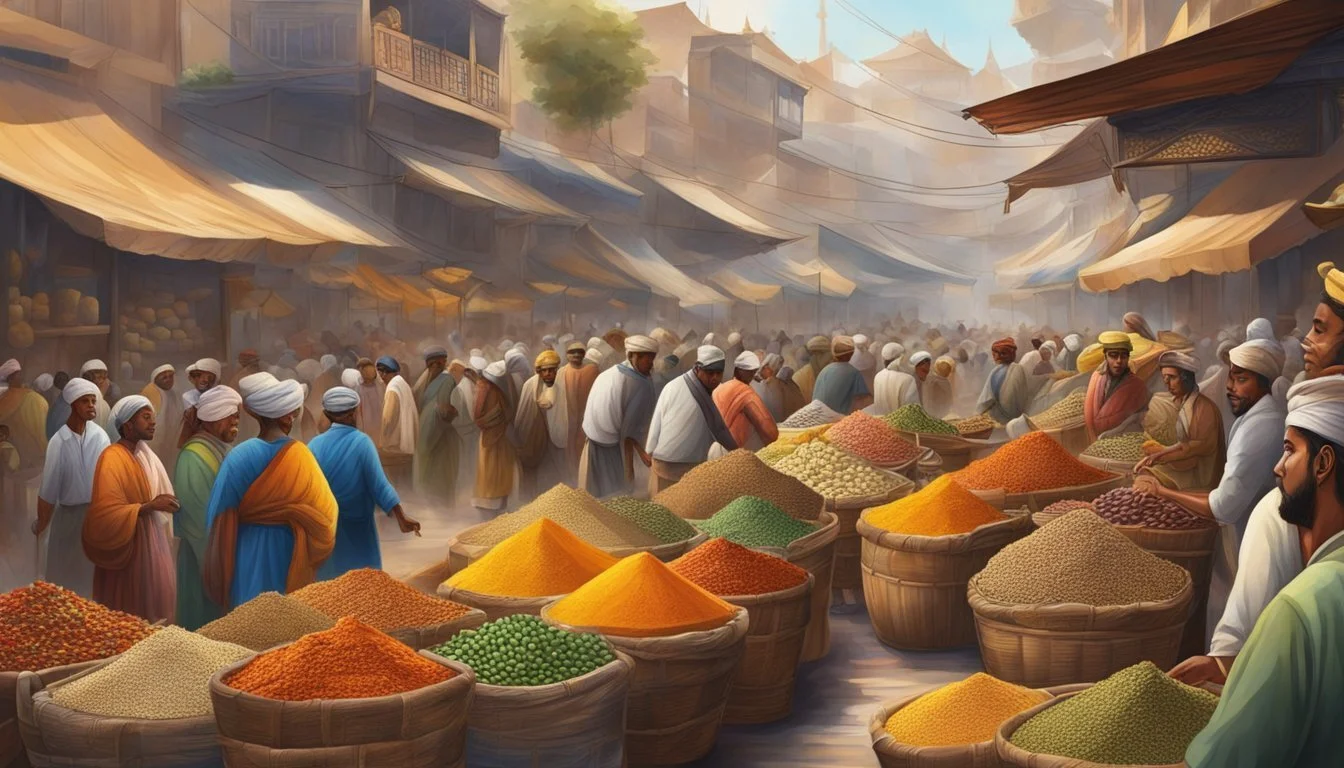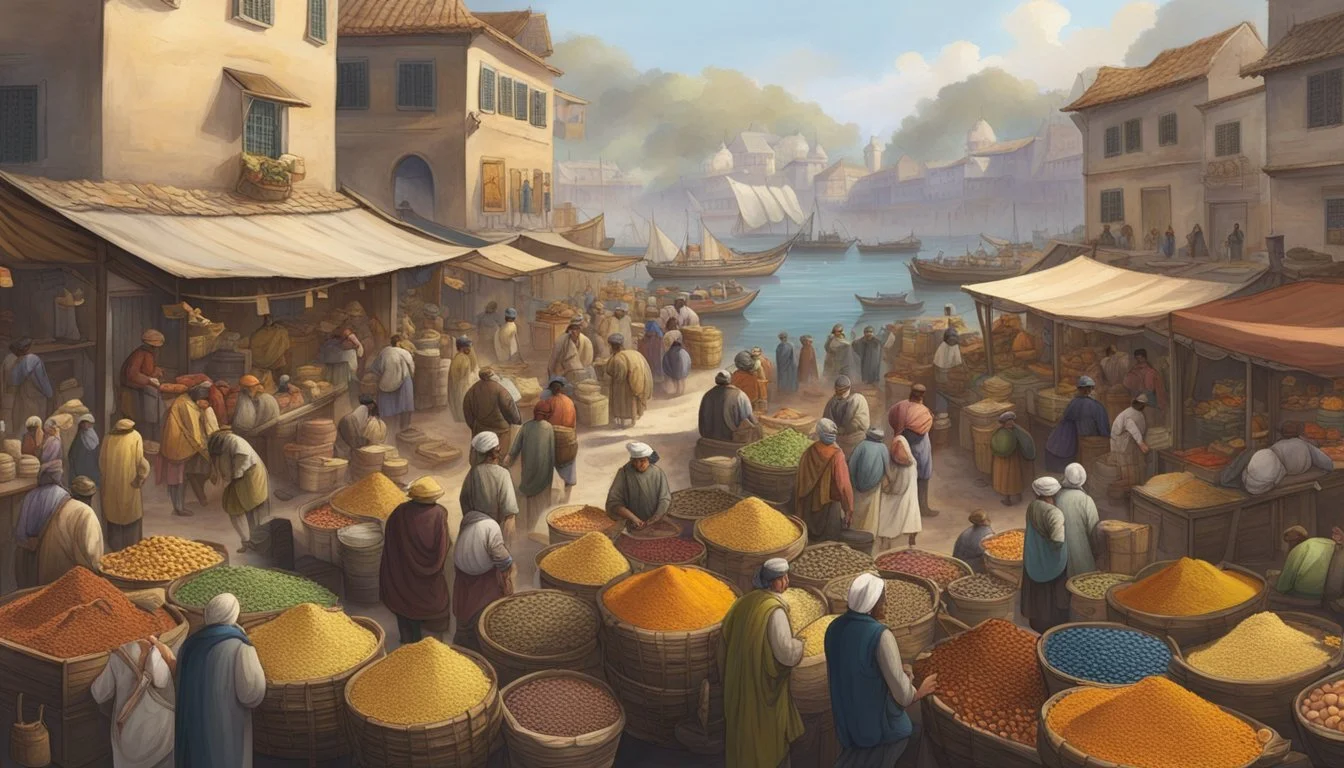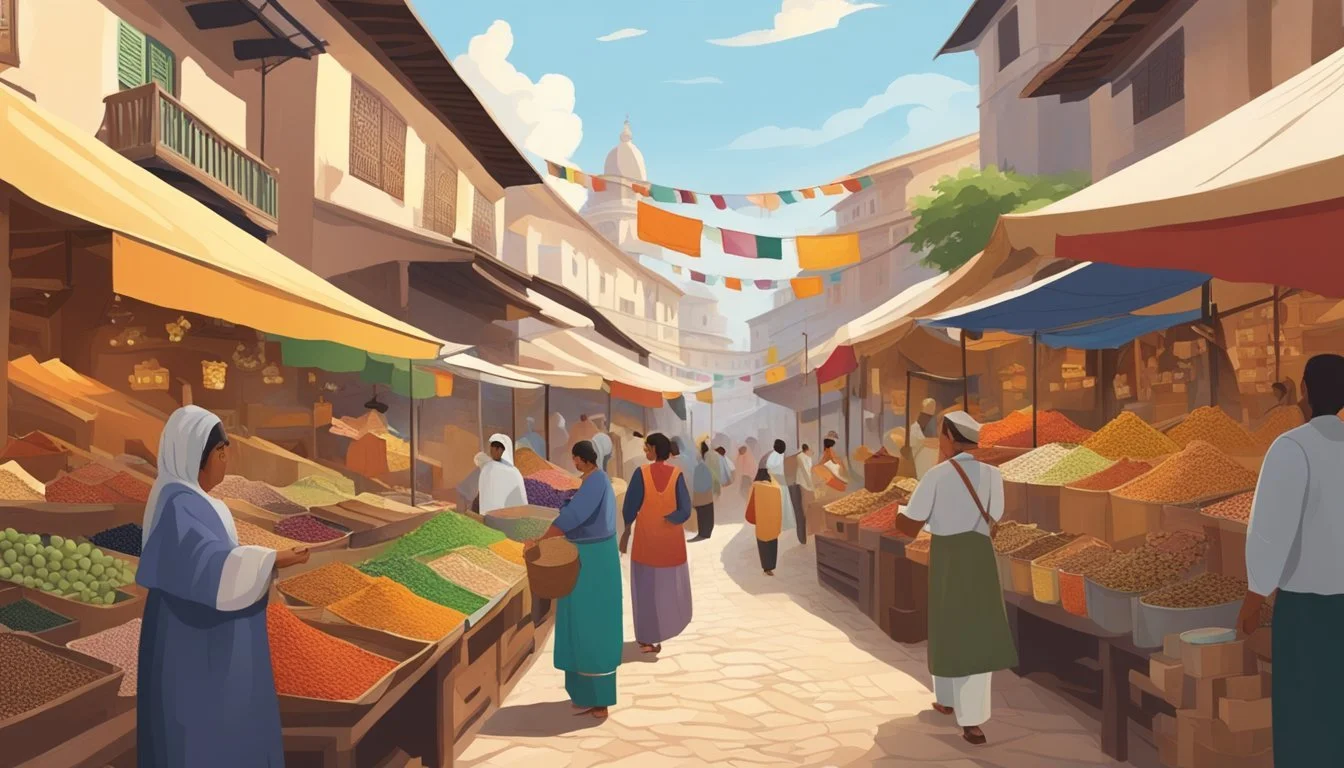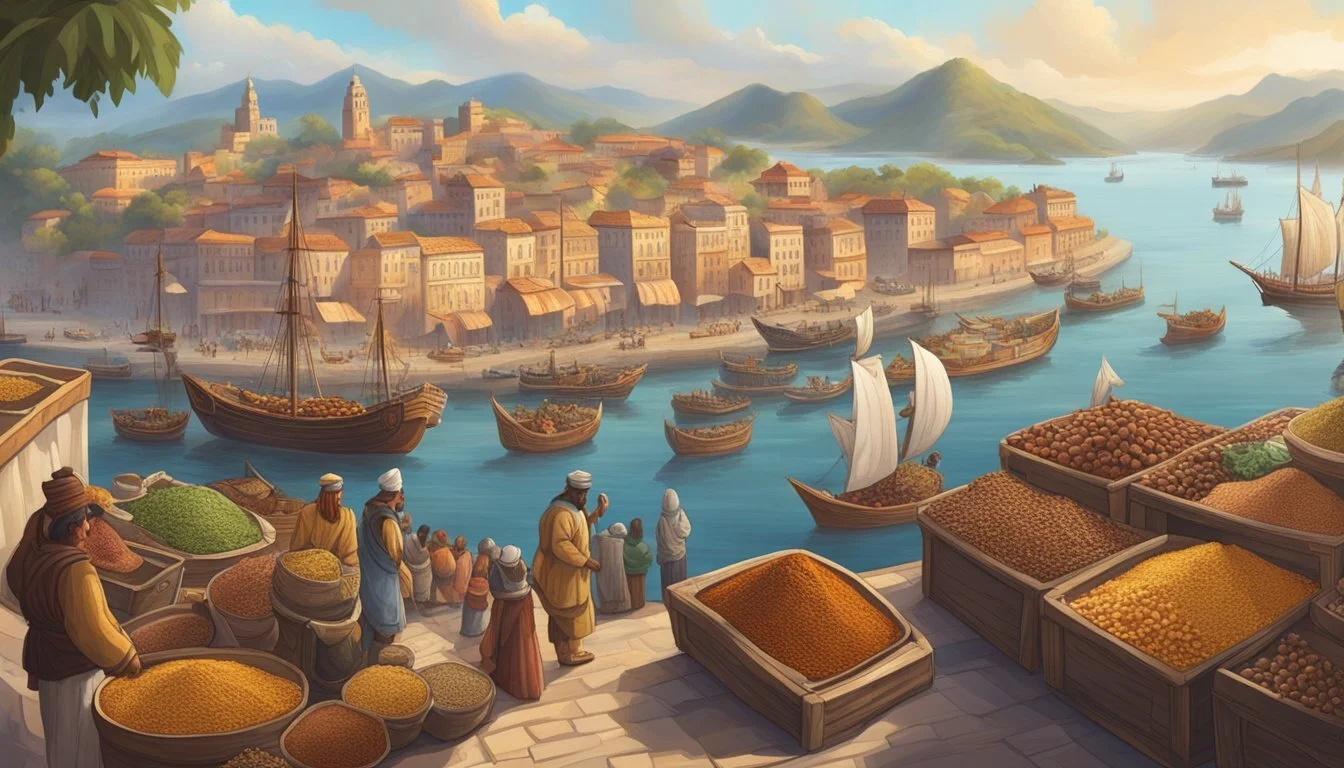10 Insightful Films on the History of the Spice Trade
Cinematic Journeys Through Global Commerce
The spice trade has played a pivotal role in shaping world history, influencing economies, cultures, and global power dynamics for centuries. From ancient civilizations to modern times, the pursuit of exotic flavors and aromatic substances has driven exploration, commerce, and conflict across continents.
Documentaries exploring the history of the spice trade offer viewers a captivating journey through time, uncovering the fascinating stories behind these prized commodities. These films delve into the origins of spices, the treacherous voyages undertaken to procure them, and the lasting impact of the spice trade on our world today. By examining this rich historical tapestry, audiences gain valuable insights into the interconnectedness of global cultures and the enduring allure of spices.
1) The Spice Route
"The Spice Route" is a captivating documentary that explores the ancient trade networks connecting Asia, Africa, and Europe. This film traces the paths taken by merchants transporting valuable spices across vast distances.
Viewers are transported to bustling ports and remote islands as the documentary examines how spices shaped economies and cultures. It highlights key spices like pepper, cinnamon, and nutmeg that were once worth their weight in gold.
The film depicts the dangerous sea voyages undertaken by traders seeking fortune. It shows how spices influenced exploration, leading to new maritime routes and the discovery of lands.
"The Spice Route" also delves into the political ramifications of the spice trade. It examines how control over spice-producing regions became a source of conflict between empires.
Through expert interviews and historical reenactments, the documentary brings to life the sights, sounds, and smells of the spice trade era. It offers viewers a vivid glimpse into this fascinating chapter of world history.
2) The Cost of Empire
The spice trade fueled European colonial expansion and empire-building. Films exploring this topic often depict the human toll of imperial ambitions.
Colonizers exploited local populations and resources to maintain control over lucrative spice routes. This led to conflicts with indigenous peoples and rival powers.
European powers established trading posts and colonies across Asia and the East Indies. The Dutch East India Company and British East India Company became powerful entities, sometimes wielding more influence than governments.
The pursuit of spices reshaped global power dynamics. It accelerated technological advancements in shipbuilding and navigation.
However, these gains came at a steep price. Millions suffered under colonial rule, facing oppression, cultural erasure, and economic exploitation.
Films on this subject often highlight the contrast between the wealth generated by the spice trade and the suffering it caused. They explore themes of greed, cultural clash, and the long-lasting impacts of colonialism.
3) Spices of the World: The Journey
"Spices of the World: The Journey" offers viewers a captivating exploration of the global spice trade. This documentary takes audiences on a virtual tour across continents, tracing the paths of various spices from their origins to markets worldwide.
The film showcases the diverse landscapes where spices are cultivated, from the cinnamon forests of Sri Lanka to the pepper plantations of Kerala. It highlights the intricate processes involved in harvesting and processing these aromatic treasures.
Viewers gain insights into the historical significance of spices, learning how they shaped economies and influenced global exploration. The documentary examines the role of Arab traders in spreading spices across the Middle East and beyond.
Interviews with spice farmers, traders, and culinary experts provide a comprehensive view of the industry. The film also delves into the cultural importance of spices in different societies, showcasing their use in traditional medicines and religious ceremonies.
"Spices of the World: The Journey" brings to life the fascinating stories behind familiar kitchen staples. It demonstrates how these small, fragrant seeds and bark continue to connect cultures and economies in the modern world.
4) Spice Trail
The "Spice Trail" documentary series offers a captivating journey through the history of spices. Presented by Kate Humble, this BBC production explores the origins and impact of various spices on global trade and culture.
The series takes viewers to the birthplaces of renowned spices like pepper and cinnamon. Humble retraces the steps of 15th-century explorers, visiting India and Sri Lanka to uncover the roots of these valuable commodities.
"Spice Trail" delves into the economic significance of spices throughout history. It examines how these aromatic substances shaped empires and drove international commerce for centuries.
The documentary provides insights into the cultivation, harvesting, and processing of spices. It showcases the lives of modern-day spice farmers and traders, connecting past and present.
Through vivid storytelling and stunning visuals, "Spice Trail" brings to life the mythology and cultural importance of spices. It demonstrates how these flavors continue to influence cuisines and economies worldwide.
5) Spice Wars: The Battles for Control
The spice trade sparked intense conflicts between European powers vying for dominance. These "Spice Wars" shaped global politics and economics for centuries.
Portugal initially established control over key spice routes in the 15th century. They fiercely guarded their monopoly on the lucrative trade from the East Indies.
The Dutch East India Company soon challenged Portuguese supremacy. They aggressively seized control of the Spice Islands in the early 17th century, establishing Jakarta as their trade center.
English and Spanish forces also fought to gain footholds in the spice-producing regions. Bloody battles erupted on land and sea as nations competed for the valuable commodities.
Control over nutmeg, cloves, and other spices became a matter of national security. European powers viewed domination of the spice trade as crucial to their imperial ambitions and economic prosperity.
These conflicts led to the colonization of many spice-producing areas. Local populations often suffered greatly under harsh colonial rule aimed at maintaining spice monopolies.
The Spice Wars reshaped global trade networks and power dynamics. Their impact extended far beyond economics, influencing exploration, scientific advancement, and cultural exchange for generations.
6) Spice Island Saga
"Spice Island Saga" is a captivating documentary that explores the rich history of the Maluku Islands, also known as the Spice Islands. The film transports viewers to the lush archipelago that once held a monopoly on valuable spices like nutmeg and cloves.
Through stunning visuals and expert interviews, the documentary traces the islands' journey from obscure tropical paradise to the epicenter of global trade. It examines how the quest for spices shaped the Age of Exploration and led to fierce competition among European powers.
The film delves into the complex relationships between local sultans, Dutch colonizers, and indigenous communities. It highlights the environmental and cultural impacts of the spice trade on the islands and their inhabitants.
"Spice Island Saga" also discusses the lasting legacy of this era, from the enduring importance of spices in world cuisine to the ongoing cultural exchanges between East and West. The documentary provides a compelling look at a pivotal chapter in world history through the lens of these small but significant islands.
7) Cloves and Conquests
Cloves played a pivotal role in shaping global trade and colonial ambitions. Native to the Maluku Islands of Indonesia, these aromatic flower buds became a sought-after commodity in medieval Europe.
The Portuguese were the first Europeans to establish direct trade routes to the Spice Islands in the early 16th century. Their monopoly on the clove trade brought immense wealth and power to the Portuguese Empire.
Spanish explorers soon followed, challenging Portuguese dominance. The rivalry between these two naval powers intensified as they vied for control of the lucrative spice routes.
In the 17th century, the Dutch East India Company emerged as a formidable force in the spice trade. They systematically conquered the Maluku Islands, establishing a monopoly on clove production and trade.
The Dutch implemented strict policies to maintain their control, including the extirpation of clove trees outside their designated plantations. This aggressive approach had lasting impacts on local economies and ecosystems.
The conquest of the Spice Islands and control of the clove trade significantly influenced colonial expansion, maritime technology, and global economic systems. It remains a compelling example of how a small spice could shape the course of history.
8) Pepper: A Path through Time
Pepper's journey through history is a tale of global exploration and trade. This spice played a pivotal role in shaping world economies and driving European exploration.
The Age of Exploration marked a significant turning point for pepper trade. European explorers like Vasco da Gama sought new routes to spice-rich Asian lands.
Vasco da Gama's discovery of the sea route to India in 1498 revolutionized the spice trade. This new route diminished the Arab monopoly on pepper and other spices.
Prior to this, pepper moved through complex land and sea routes via the Middle East. The Crusader States in the Levant were crucial links in this trade network.
When Saladin reconquered most of the Crusader States between 1174 and 1187, it disrupted these trade routes. This shift put renewed emphasis on Alexandria as a key trading hub.
Venice emerged as a dominant force in the European pepper trade. The city's merchants sold pepper in London for substantial profits, fueling Venice's rise as a maritime power.
9) Cinnamon Secrets
"Cinnamon Secrets" explores the fascinating history of one of the world's most beloved spices. This documentary delves into the origins of cinnamon in ancient Sri Lanka and its journey across the globe.
The film reveals how cinnamon became a prized commodity in ancient Egypt, where it was used in embalming rituals. It also examines the spice's role in medieval European cuisine and medicine.
Viewers learn about the dangerous voyages undertaken by early traders seeking to control the cinnamon market. The documentary highlights the fierce competition between European powers vying for dominance in the spice trade.
"Cinnamon Secrets" showcases the traditional harvesting methods still used in Sri Lanka today. It also addresses the environmental and social impacts of modern cinnamon production.
The film concludes by examining cinnamon's place in contemporary cuisine and its potential health benefits. It offers a comprehensive look at how this aromatic bark has shaped economies, cultures, and tastes throughout history.
10) Nutmeg Narratives
"Spices and Empires" by Andrew Dalby explores the profound impact of nutmeg on global trade and colonial expansion. This documentary meticulously examines how the small Banda Islands became central to European imperial ambitions.
The film reveals the dark history of Dutch colonization in the Banda Islands, where violence was used to secure a nutmeg monopoly. It highlights the extreme measures taken to control this valuable spice.
Nutmeg's significance extended beyond culinary uses. The documentary explains its perceived medicinal properties and role as a status symbol in European courts.
The trade of Run, a tiny nutmeg-producing island, for Manhattan is explored as a pivotal moment in colonial history. This exchange underscores the immense value placed on nutmeg at the time.
"Spices and Empires" also touches on nutmeg's modern uses and its continued importance in global cuisine. It traces the spice's journey from a rare luxury to a common household ingredient.
The Historical Significance of the Spice Trade
The spice trade profoundly shaped global economies and cultures for centuries. It drove exploration, fostered international commerce, and facilitated the exchange of ideas and customs across vast distances.
Economic Impact on Global Markets
Spices were once worth their weight in gold, fueling a lucrative global trade network. Pepper, cinnamon, nutmeg, and cloves commanded astronomical prices in European markets. This high demand spurred maritime innovations and the development of new trade routes.
Venetian and Arab merchants initially dominated the spice trade, controlling the flow of goods from Asia to Europe. The search for direct access to spice sources motivated Portuguese and Spanish explorations in the 15th and 16th centuries.
The spice trade led to the establishment of trading posts and colonies across Asia. It contributed to the rise of powerful trading companies like the Dutch East India Company, which became one of the world's first multinational corporations.
Cultural Influences and Exchanges
The spice trade facilitated the spread of religions, languages, and culinary traditions. Islam expanded along trade routes, while European languages gained footholds in distant lands.
Spices revolutionized European cuisine, transforming bland diets and preserving foods. They were also valued for medicinal properties, used in perfumes, and incorporated into religious rituals.
The exchange of crops and agricultural techniques occurred alongside spice trading. New World plants like chili peppers and tomatoes were introduced to Asia, while Asian spices found their way to the Americas.
Cultural artifacts, art, and knowledge flowed along spice routes. This exchange of ideas contributed to scientific advancements and the Renaissance in Europe.
Key Events in the Development of the Spice Trade
The spice trade evolved through pivotal discoveries and colonial power struggles that reshaped global commerce. New maritime routes and European expansion fundamentally altered the dynamics of this lucrative industry.
Discovery of New Trade Routes
In 1488, Bartolomeu Dias rounded the Cape of Good Hope, opening a sea route to Asia. This breakthrough paved the way for Vasco da Gama's 1498 voyage to India, establishing direct European access to Asian spice markets.
Portuguese explorer Ferdinand Magellan's 1519-1522 circumnavigation of the globe revealed new spice sources in the Moluccas. This expedition expanded knowledge of maritime routes and spice-producing regions.
The discovery of the Americas in 1492 by Christopher Columbus, while searching for a westward route to Asia, eventually led to the introduction of new spices like chili peppers and vanilla to global trade.
Colonial Involvement and Control
The Dutch East India Company, founded in 1602, quickly dominated the spice trade. They established control over key production areas like the Moluccas, monopolizing clove and nutmeg supplies.
British involvement intensified with the creation of the East India Company in 1600. They focused on pepper trade from India and later expanded their influence across South Asia.
The 1767 transfer of the Moluccas to British control during the Anglo-Dutch wars temporarily shifted spice trade dynamics. This period saw increased competition and attempts to break Dutch monopolies.
France entered the spice trade arena in the 17th century, establishing colonies in the Indian Ocean and Caribbean. Their involvement added to the complex web of colonial rivalries in the spice trade.




